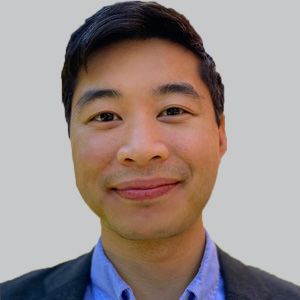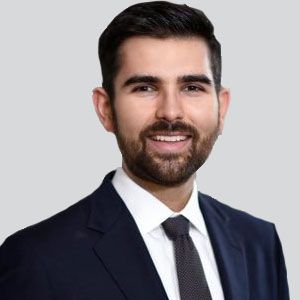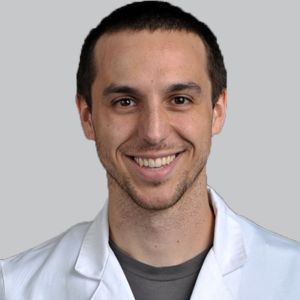Article
The Transformational Impact of COVID-19 on Medical Education
Author(s):
Students share their experience in the virtual classroom, navigating new requirements, and the lessons learned from their position in a global pandemic.
Among the untold stories of the COVID-19 pandemic, none may be more overshadowed than the changes made within the medical education system, and the adjustments the students themselves were forced to make during a time in which even those who were teaching class, were learning themselves.
A select number of those students worked on the frontlines throughout the pandemic—some out of choice, and some who were requested by their education system. In addition to continuing their daily studies, they were tasked with learning how to treat COVID-19 patients along the guides of ever-changing protocols.
Patrick Chen

Years before it’d be asked of them in a professional setting, medical students demonstrated the necessary features of clinical adaptation and resiliency. Patrick Chen, a neuro ICU fellow at Massachusetts General Hospital, saw the call to action as part of his duty.
“When we realized what COVID was, most neural ICU people were very inclined to jump in,” Chen said. “That’s just the type of personalities within our field. It’s all hands-on deck. From that standpoint, I don’t think there was any doubt that COVID was going to be a daily interaction for us.”
Chen echoed the thoughts of many frontline workers facing the brunt of the pandemic over this last year. Ahead of their time in responsibility and reliability, medical students embraced the culture and professionalism of their would-be colleagues from the very beginning of COVID-19.
Difficult Decisions
Depending on the level of education, the decision to enter the frontlines may have been easier for some than others. Those who are in medical school are paying to go to school, whereas those in residency may be paid by an institution to conduct research for them.
Christina Zhang-Miller

This played “a huge factor” into the decisions of some students, said Christina Zhang-Miller. Zhang-Miller a fourth-year medical student from the University of Cincinnati. She was among a divided class: 50% wanted to help at the hospital, 50% cited family or loved ones they wanted to protect from possible transmission. What’s more, the latter group had no financial incentive to outweigh the risk.
For newcomers who entered the frontlines, the daily strain of overwhelming new cases, worsening patient conditions, and limited resources weighed heavily.
Fabio Nascimento, MD

Fabio Nascimento, MD, an epilepsy fellow at Massachusetts General Hospital, shared his experiences in responding to COVID-19 deaths while continuing his education. The sensation was uniquely difficult.
"The most heartbreaking devastating scenarios are the people like you and me, who are in their 20s and 30s,” Nascimento said. “These people have no medical history at all, they come in with COVID, and are then moved to the ICU to get intubated. It’s definitely scary.”
At the beginning of the pandemic, there was a heightened sense of fear and anxiety throughout hospitals and across clinical care specialties. A lot was attributable to the unknowns of the virus and how to treat it. In this circumstance, both students and clinicians were learning together, eroding some of the mentor-mentee relationship that is common within education.
A Virtual World
Even for those who were not in the mix of frontline care, medical school stressors became exacerbated as well. Like many aspects of life, the switch to virtual gradually adopted, and came with shortcomings. This transition resulted in greater rates of isolation, increased use of email, and struggles with establishing boundaries between work and home, which affected faculty, students, and support staff.1
Applicants at every stage of schooling were greeted with a completely different interviewing process, one that does not involve shaking hands and touring facilities. Students were forced to make decisions about their future education without gaining the full experience: meeting professors, visiting laboratory settings, or connecting with future classmates and colleagues.
Zhang-Miller has been in the process of interviewing for residency programs. Specializing in anesthesiology, she has found it challenging so far. “I’ve never done in-person interviews for residency, so I have no comparison. I don’t know if it feels the same or not. They always say choose a program you vibe well with, but it’s hard to get to know the residents over Zoom.”
Virtual classes themselves have been met with reticence. Zhang-Miller is among those who questioned their long-term feasibility.
“There are a lot of ongoing discussions about it amongst applicants and residency programs,” Zhang-Miller said. “It really depends, if we start residency and feel ‘Woah, the program is being misrepresented,’ then that’s an indicator that virtual interviews didn’t work well.”
The fourth-year medical student isn’t the only one who is uncertain about the future. Others, including Chen, have no clue to what extent virtual learning will be adopted following the conclusion of the pandemic. He wondered whether institutions will recognize the current model as “the future of medicine,” or whether they’ll return to their old method—which itself faced criticism for inefficiencies.
“I wonder if the pendulum is going to swing the other way,” Chen said. “There’s something to be lost in not having that consistency of being in the hospital.”
Competition
The pandemic has also had an impact on the ability for students to stand above their peers. In the virtual setting, the grading systems can change, shifting to more pass/fail than individual grades. On top of that, some of the requirements for students have been altered as well.
The National Board of Medical Examiners (NBME) and the Federation of State Medical Boards (FSMB), the organizations that oversee the United States Medical Licensure Examination (USMLE), announced the cancelation of the Step 2 Clinical Skills (CS) exam in January.2
After being on hold since May 2020, the announcement came roughly 6 months after the organizations announced they would review the exam’s purpose and endeavor to create a modified version. As is the case with any Step exam, its primary purpose was medical licensure.
Conducting clinical rotations was also an area that was impacted by the pandemic. In March 2020, the Association of American Medical Colleges (AAMC) strongly supported pausing all student clinical rotations until the schools had a better opportunity to educate its students with up-to-date information on COVID-19, and the appropriate steps in place to ensure their own and their patients’ safety.3
Research
The ability to stand out among fellow peers became a challenge both in the lab and outside of the classroom.
“Another big part of medical school is building your application for residency. Part of that is volunteer experience, research experience,” Zhang-Miller said. “Volunteer opportunities are very limited right now. Research opportunities are limited right now because you can’t do anything in person. There’s a lot of anxiety for first- and second-year medical students in terms of whether or not their applications are going to be ‘good enough’ for residency.”
For some students, their research was severely impacted by the pandemic. Especially during the earlier stages, a number of studies in the clinical lab setting were put on hold. For Dustin Shaw, the ability to not conduct experiments delayed his work; however, he felt as though he is in a more fortunate position than others.
Dustin Shaw

"I’m at the end. For me, the delay is probably not as severe as a student who’s just starting out, who just had 6 months of their time that they could be using getting their PhD cut off,” Shaw said.
Shaw, an MD/PhD candidate at the University of Chicago, is in his final year before he goes back to medical school. He currently has not committed to his next program. To get over the endeavors of the pandemic, he spent 6 weeks over the summer working in a clinical lab that obtained and processed COVID-19 samples for subsequent analysis.
He said that only a small subset of students were allowed to go into the buildings for COVID-19-specific projects, or to maintain valuable operations that contained years of data and work.
Becoming a doctor is not just reading charts, understanding electroencephalogram (EEG) data, or soaring to the top of your class with highest honors. There’s an aspect of maturing and gaining confidence in front of the patients you’re one day going to treat.
“Examining people is really important. That’s a huge hole in the education portion of residency training. For me, being in my fourth year of residency, it doesn’t influence me as much because I’ve already done a lot of inpatient rotations,” Nascimento said. “But for people that are just starting residency, it’s definitely a huge change. You do lose a lot as far as interacting with patients and having attendings around you showing you how to do certain things and exam. There’s a huge loss there.”
Within certain specialties, the need to interact with patients becomes even more important. Nascimento pointed out that those who may be doing a movement disorders fellowship would be at a disadvantage to begin with, because the in-person work is not comparable to the virtual setting.
Throughout the different levels of education, students begin to develop and share a special bond with their colleagues. In a non-COVID environment, students would spend time congregating in small-group interactions, laboratory sessions, simulations, and technology sessions. There would be a mutual level of sympathy for the amount of work that’s on a student’s plate, as well as the mental stresses they may be facing.
The Future
While many will remember the COVID-19 pandemic as a source of disruption, it may be also be viewed as a catalyst for the transformation of medical education—changes that had been brewing for the past decade. There’s also something to be said for the unequivocal educational experience gained from helping respond to a pandemic.
The pandemic also provided an opportunity for learners to realize the dynamic nature of medical knowledge: key concepts in human biology, sociology, psychology, and system science proved essential for caregivers at every level responding to this novel threat.
Town halls led by translational scientists, epidemiologists and public health officials, health system leaders and frontline clinicians demonstrated the necessary diverse skill sets a clinician must need, while also showed that multidisciplinary action can help solve complex health care problems.4
Schools and learners also pilot tested new methods of instruction, rethought their approach to assessment, identified different methods to build community, and adopted new strategies for recruitment and admission in a travel-constricted world.
Some students are excited about the changes made to education. “Despite all the tragic aspects the pandemic brought us, from an education standpoint, there’s a lot of newer methods that have been created or improved,” Nascimento said.
On top of everything, Nascimento believed the number of educational platforms available to students has grown. He noted the number of videos, podcast, teaching sessions, and tutorials have helped close some of the educational gaps that lie within virtual learning.
To Nascimento’s point, students adapting to a more virtual setting coincides with the direction medicine was trending anyway. The use of telemedicine has grown exponentially over the past decade, and was further exacerbated by the pandemic.
Amid the greatest adoption of telehealth in the history of medicine, these students will have a firsthand perspective at the optimal usage of these techniques and provide input on ways to evolve it for the better.
Decades down the road, some students will be able to answer that they were not on the sidelines of the COVID-19 pandemic, but rather a part of the response needed to help uplift the country out of its dark time. As a whole, the lessons learned from today’s medical students will continue to be a key cog in how medication education, and therefore clinical care itself is constructed in the future.




